
Just in Time Quick Check Patterns
- Subject:
- Mathematics
- Material Type:
- Assessment
- Provider:
- VDOE
- Author:
- VDOE
- Date Added:
- 10/04/2024

Just in Time Quick Check Patterns

Just in Time Quick Check Repeating Patterns

Sorting Collections Mathematics Instructional Plan

People Patterns - Repeating Patterns - Mathematics Instructional Plan
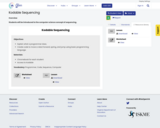
Students will be introduced to the computer science concept of sequencing.
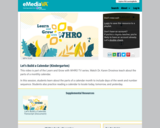
This video is part of the Learn and Grow with WHRO TV series. Watch Dr. Karen Drosinos teach about the parts of a monthly calendar.

This lesson will focus on making patterns through movement. While exercising we will have students practice repeating movements to create a pattern.

Repeated motion is present everywhere in nature. Learn how to 'make waves' with your own movements using a motion detector to plot your position as a function of time, and try to duplicate wave patterns presented in the activity. Investigate the concept of distance versus time graphs and see how your own movement can be represented on a graph.
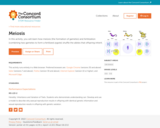
Meiosis is the process by which gametes (eggs and sperm) are made. Gametes have only one set of chromosomes. Therefore, meiosis involves a reduction in the amount of genetic material. Each gamete has only half the chromosomes of the original germ cell. Explore meiosis with a computer model of dragons. Run meiosis, inspect the chromosomes, then choose gametes to fertilize. Predict the results of the dragon offspring and try to make a dragon without legs. Learn why all siblings do not look alike.
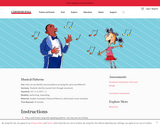
Students identify musical form through movement.

Video Description: What causes the phases of the Moon? From New Moon to Full Moon, the Earth-Sun-Moon system is responsible for the Moon’s changing phases. Learn more about rotation, revolution and this repeatable pattern. Video Length: 3:13. NASA eClipsTM is a suite of online student-centered, standards-based resources that support instruction by increasing STEM literacy in formal and nonformal settings. These free digital and downloadable resources inform and engage students through NASA-inspired, real-world connections.NASA eClips Our World videos (grades 3-5) help students understand the differences between science (the natural world) and engineering (the designed world). These video segments supplement elementary learning objectives not only in science, technology, engineering and mathematics, but also in reading, writing, visual and performing arts.

Video Description: Find out more about how our sun's position in the sky changes due to Earth's rotation, revolution and tilt. Learn from the experts -- Dr. Alex Young and Dr. Nicki Viall explain these connections so students understand patterns within the Earth-sun relationship. Video Length: 2:19NASA eClips is a suite of online student-centered, standards-based resources that support instruction by increasing STEM literacy in formal and nonformal settings. These free digital and downloadable resources inform and engage students, through NASA-inspired, real-world connections.NASA eClips Our World videos (grades 3-5) help students understand the differences between science (the natural world) and engineering (the designed world). These video segments supplement elementary learning objectives not only in science, technology, engineering and mathematics, but also in reading, writing, visual and performing arts.

Video Description: The Moon impacts Earth through tides and moonlight. NASA missions to the Moon continue to help us discover more about our nearest neighbor. Learn more about Moon mapping and resources. Video Length: 2:49. NASA eClipsTM is a suite of online student-centered, standards-based resources that support instruction by increasing STEM literacy in formal and nonformal settings. These free digital and downloadable resources inform and engage students through NASA-inspired, real-world connections.NASA eClips Our World videos (grades 3-5) help students understand the differences between science (the natural world) and engineering (the designed world). These video segments supplement elementary learning objectives not only in science, technology, engineering and mathematics, but also in reading, writing, visual and performing arts.

Video Description: What are citizen scientists? Why is their work so important to NASA? Join Dr. Michelle Thaller as she explains how the general public, using scientific protocols, careful observations and accurate measurements, can help NASA make exciting new discoveries. Find out how you can be a citizen scientist today. Video Length: 4:26.NASA eClipsTM is a suite of online student-centered, standards-based resources that support instruction by increasing STEM literacy in formal and nonformal settings. These free digital and downloadable resources inform and engage students through NASA-inspired, real-world connections.NASA eClips Real World segments (grades 6-8) connect classroom mathematics to 21st Century careers and innovations. They are designed for students to develop an appreciation for mathematics through real-world problem solving.

Video Description: Picture this. NASA sends a spacecraft to land on an asteroid, grab a piece of that asteroid, and then send that sample back to Earth to study. Learn more about all that NASA can learn about the formation of the Solar System from the close encounter of OSIRIS-REx with near-Earth asteroid Bennu. Video Length: 3:55.NASA eClipsTM is a suite of online student-centered, standards-based resources that support instruction by increasing STEM literacy in formal and nonformal settings. These free digital and downloadable resources inform and engage students through NASA-inspired, real-world connections.NASA eClips Real World segments (grades 6-8) connect classroom mathematics to 21st Century careers and innovations. They are designed for students to develop an appreciation for mathematics through real-world problem solving.

Video Description: In addition to planets and their moons, there are many small bodies orbiting the Sun. How did these bodies form? Learn more about comets and asteroids and the role these play in our Solar System, as well as NASA's Rosetta and NEOWISE missions. Video Length: 3:09.NASA eClipsTM is a suite of online student-centered, standards-based resources that support instruction by increasing STEM literacy in formal and nonformal settings. These free digital and downloadable resources inform and engage students through NASA-inspired, real-world connections.NASA eClips Real World segments (grades 6-8) connect classroom mathematics to 21st Century careers and innovations. They are designed for students to develop an appreciation for mathematics through real-world problem solving.

Video Description: Discover how NASA's Earth-observing satellites gather data to monitor food growth. Dr. Inbal Becker-Reshef describes how mathematics is used to interpret satellite data and describe vegetation and crop yield. Dr. Hannah Kerner shares how algorithms and models use NASA data to describe and predict food supply and food shortages. This work through NASA Harvest provides tools for farmers and governments to describe and predict food security worldwide. Video Length: 2:09.NASA eClipsTM is a suite of online student-centered, standards-based resources that support instruction by increasing STEM literacy in formal and nonformal settings. These free digital and downloadable resources inform and engage students through NASA-inspired, real-world connections.NASA eClips Real World segments (grades 6-8) connect classroom mathematics to 21st Century careers and innovations. They are designed for students to develop an appreciation for mathematics through real-world problem solving.
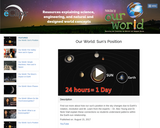
Find out more about how our sun's position in the sky changes due to Earth's rotation, revolution and tilt. Learn from the experts -- Dr. Alex Young and Dr. Nicki Viall explain these connections so students understand patterns within the Earth-sun relationship.

Students will explore sequencing (including ordinal numbers); and simple loops (patterns and repetition) using the pea plant life cycle. This is a hands-on learning opportunity for students to investigate the algorithms in the natural world around us. Students will gain insight into loop, repeating, and sequence patterns, they will also debug and brainstorm what to do if the pattern is broken.

The student will be given magnetic cubes to create a loop and identify what each color represents needed to understand patterns, looping and sorting.